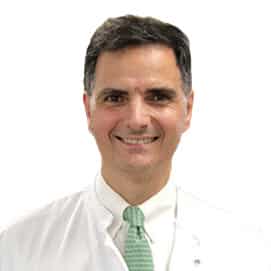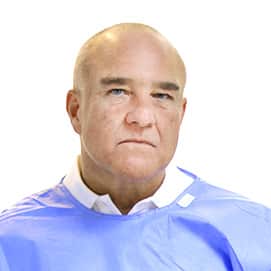If testicular cancer is suspected, the necessary studies are prescribed. With their help, a specialist doctor can find out if there is a tumor and, in case of a positive answer, what type of tumor and how far the disease has gone.
History and examination
First, the doctor listens to the patient's complaints, asks about the history of the disease and possible risk factors. Then the doctor examines the patient, while he palpates, among other things, the testicles for the presence of nodes or indurations. With the help of this study, important data about the nature of the disease can already be obtained.
Ultrasound examination (sonography) of the testicles
Ultrasound (sonography), which is painless and does not carry radiation exposure, can be used to obtain an image of the tumor.
Laboratory research
A blood test provides information about the general condition of the patient, including the function of organs such as the kidneys and liver. These studies are also important for future treatment. In addition, the so-called tumor markers are determined. We are talking about substances produced by tumor cells in increased quantities. Including testicular tumors often produce tumor markers that can be determined in the blood. The most important are: ß-HCG (human.choriogonadotropin), AFP (alpha-fetoprotein), LDH (lactate dehydrogenase). A study on tumor markers often makes it possible to determine what type of testicular tumor (non-seminoma or seminoma) is in question. However, not all patients with testicular tumors have tumor markers. Tumor markers are important not only for diagnosis, but also are of great help in monitoring the course of the disease. In addition, during clinical examination, tumor markers play an important role in detecting relapses of the disease.
X-ray examination of the lungs
An x-ray examination of the lungs serves to search for metastases in the lungs and assess the condition of the lungs and heart when deciding on an operation.
Computed tomography (CT) of the lungs and abdomen
Computed tomography is indispensable for accurately determining the extent of a tumor. In patients with testicular cancer, computed tomography is particularly helpful in recognizing and measuring enlarged retroperitoneal lymph nodes, as well as metastases, especially in the lungs. The attending physician thus receives information that is decisive for planning the type and extent of further therapy.
Magnetic resonance imaging (MRI)
Magnetic resonance imaging may be ordered instead of CT, with the advantage of no radiation exposure. MRI also allows you to take layer-by-layer images of the body. This study uses a magnetic field, X-rays are not used. After the doctor receives the results of all examinations, he decides together with the patient which treatment methods should be applied in addition to the operation.
Head of the Clinic of Oncology, Hematology and Palliative Medicine
Head of the Clinic for General, Visceral, Thoracic and Endocrine Surgery
Head of the Clinic for Radiation Therapy and Radiological Oncology
Video
Request appointment
Useful links
Photo gallery












